- Pennywort
- Pennywort
- Hydrophobic larvae
The large hydrophobia beetle is one of the most common representatives of our fauna. It can be found in almost all corners of the world: in the Mediterranean, the Caucasus, in southern Siberia and in Primorye. The insect can live in India, China, as well as in European countries. A large family of these insects has about two thousand species, each of which has its own color, characteristics and lifestyle.
Insect features
The big beetle is a water dweller. Among his relatives, he is one of the largest - the length of the body of the hydrophilic reaches up to 5 cm. The sight is attracted by the black glossy coloring of the hydrophobia. If you compare it with a bordered beetle, then outwardly they have some similarities. A striking distinguishing feature of the latter is a noticeable yellow border encircling the long body of the insect.
On the massive head of the beetle are large eyes and short club-shaped antennae. On the sides on the abdomen you can see red spots. Elytra with thin grooves are located on the dorsal side of the body. Under them are 6 pairs of abdominal spiracles.
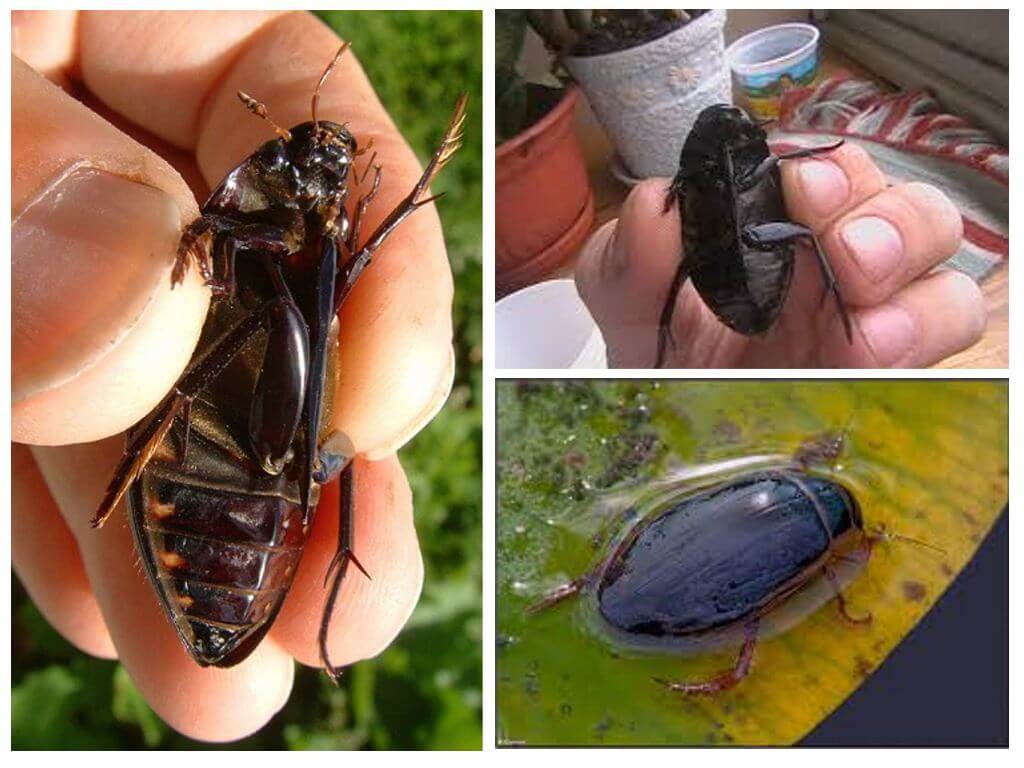
The body shape of a large hydrophobia is oblong and convex. When compared with the body of a fringed swimmer, it is less streamlined. Therefore, a bulky insect swims slowly and very reluctantly. This also happens because the beetle makes asynchronous movements with its middle and hind legs.
In addition, the limbs of a hydrophobia have triangular extensions, and the swimmer has disc-shaped suckers on them. As a result, his legs are not so cleverly perform the function of oars. That is why the beetle prefers to crawl more in the thickets of plants growing in the water. A photo of the water lovers is presented below.
Lifestyle
The diver leads mainly a nocturnal lifestyle, preferring to fly out on a warm moonlit night. The beetle has many enemies, from which it defends itself, producing an unpleasant rattle of elytra. A waterlover can scare off the enemy in another way, releasing a pulp of an unpleasant smell from the body.
The fin-bordered swimmer and the water-lover are large and differ in habits. A water-lover at ascent pops his head out and draws in air with his antennae. As a result, oxygen envelops the abdomen from below, forming a kind of bubble. The swimmer is gaining air, rising up with his abdomen.
The main habitat of a large hydrophyr is a pond, pond or river, beetle cirrus can live both in running and in still water. The nutrition of a large hydrophobia is algae, rotted parts of aquatic plants, the remains of dead insects and river fish. If you keep such beetles at home in an aquarium, you can feed them with food for aquarium fish, bloodworms, tubule mumps, and even lettuce or dandelion leaves.
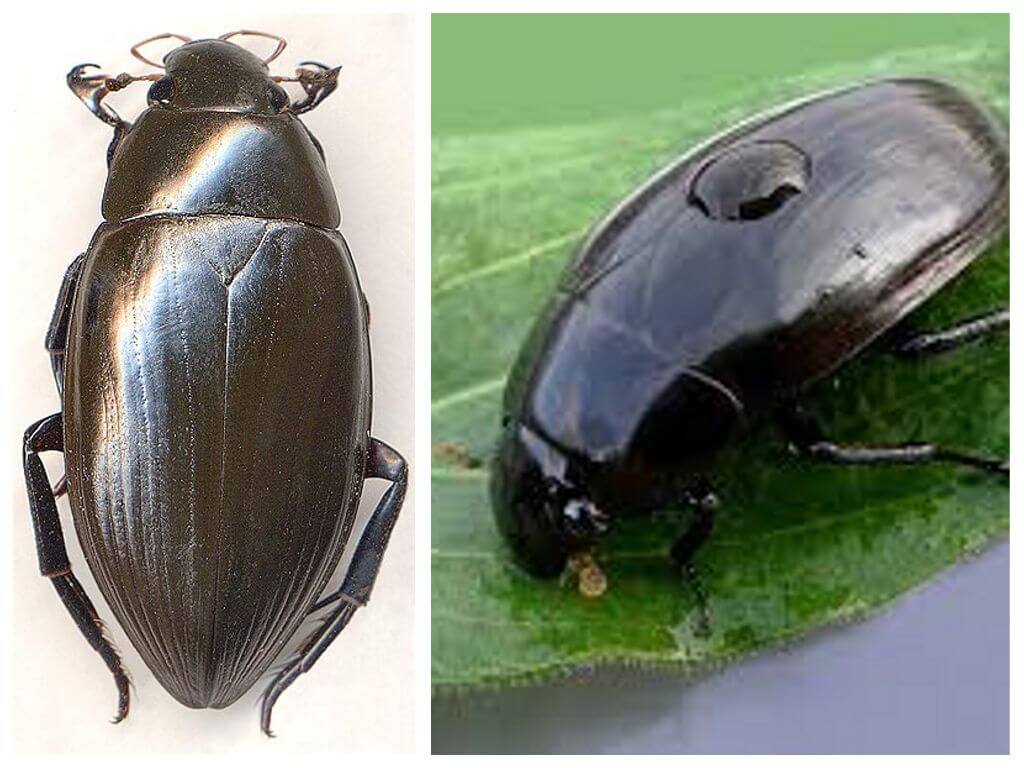
The swimmer is a predator that attacks all small aquatic inhabitants: snails, tadpoles, insects, crustaceans, and fry. The diving beetle and its larva are the most dangerous enemies of fish, since they eat not only fry, but also fish eggs.
Breeding
Beetles begin to multiply actively with the advent of spring, after which the female prepares to lay eggs. Clutching the abdomen to the sheet, she releases subtle spider webs.She uses them for weaving a cocoon, in which she will subsequently lay eggs. The female covers the filled cocoon with a lid made of the same threads. She mounts a horn-mast on it, which serves as a conductor of air. This design resembles a stable shuttle.
The lifestyle of the larvae of the great aquatic and the swimmer
After 2-2.5 weeks, larvae appear that are very different in appearance from the larvae of the fringed swimmer. They are thicker and clumsy. Powerful mandibles are located on a large head. It is also surprising that they do not leave the cocoon, but continue to dwell in it until their first molt.
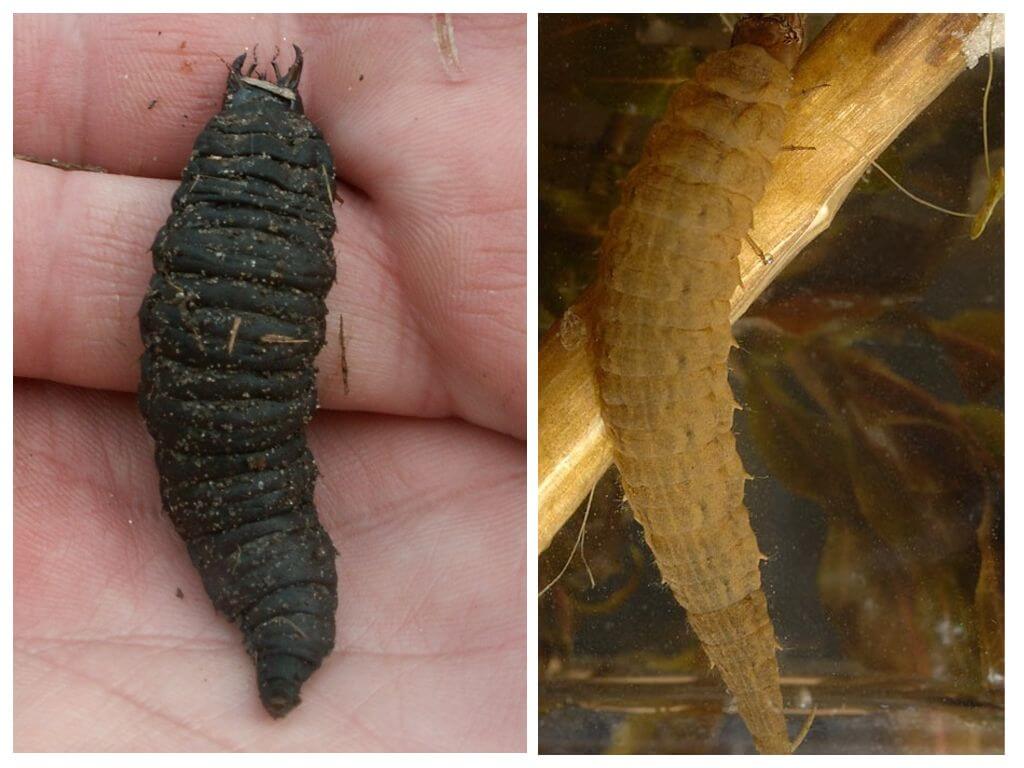
The food during this period is the shell of the cocoon and its own skins. After a certain time, the larvae begin to feed on small snails and are even able to eat fish fry. Young offspring prefer to move more through plants than to swim. In this way, it reaches the surface of the water, so that with the help of the spiracles located at the end of the abdomen, to make a supply of air.
The larvae of a swimmer and a water lover have a different way of feeding. Having attacked the snail, the hydrophobic larva crushes its shell with its powerful mandibles. Then, she burps digestive fluid to her victim, which dilutes the prey. Then he begins to absorb the digested goodies. The larva of the swimmer injects digestive juice into the interior of its prey, subsequently sucking it from the inside.
The method of protection against enemies in the larvae of the hydrophilus and the swimmer is also different. During danger, the swimmer's larva releases its sharp stings. The larva of the hydrophobic takes by cunning, pretending to be half dead. During danger, she belches black liquid, which can stain water, which scares away the enemy.
For pupation, hydrophobic larvae are selected ashore. Adult bugs will emerge from the pupae only by the end of summer, after which they will again go to conquer the water element.
After comparing the two species of beetles, it becomes clear that, living nearby, these aquatic inhabitants are very different. And the difference is not only what the diver and the swimmer eats. They adapted to life in one environment in different ways: they have a different way of breathing, development, and also the nutrition of larvae.
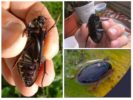
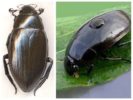
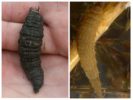




Has anyone kept swimmers and scuba divers in the aquarium? These aquatic inhabitants really attracted me with their size and olive tint.
It is unlikely that they will get along together, because the swimmer belongs to predators, and the hydrophobia is more a herbivorous insect.
Swimmers have lived with us for more than a year. But they haven’t yet encountered hydrophores.
Do plants or driftwood need to be placed in the aquarium so that the beetles have access to the surface?
We have a small aquarium, the bugs popped up to breathe on their own.
What is better to feed the water lovers?
Bloodworms, fish food - all that feed decorative fish.
A bloodworm larvae suitable?
Larvae of the hydrophobia are predators. So bloodworms or snails to them just right.
For water enthusiasts, it is desirable to have some plants in the aquarium. They can serve them as food, as well as to surface. After all, these bugs love to crawl.